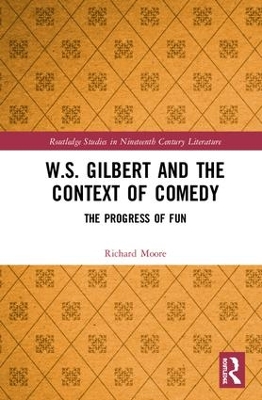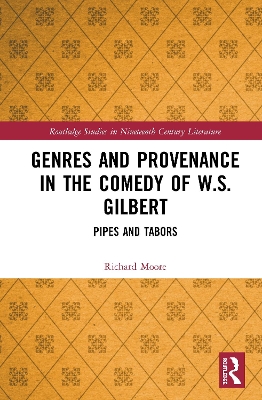Routledge Studies in Nineteenth Century Literature
2 primary works
Book 1
To what extent is a great comic writer the product of his time? How far is he (or she) influenced by factors of personal psychology upbringing and environment? To what is the writing actually part of a long continuum in which there is continuity within change and change within continuity? The Progress of Fun considers principally the last of these areas, focussing on the case of W.S. Gilbert and challenging the frequently held view that he is pre-eminently a typical Victorian. This it does by tracing his roots back to Ancient Greek comedy and to the various comedic developments that have dominated Western Europe thereafter. Also included is a careful examination of the constraints and limitations that in various forms have long affected comedy-writing, and an evaluation of Gilbert’s particular skills and legacy within the on-going process. The whole is a suitable prelude to a second volume (Pipes and Tabors) which will consider Genre in W.S. Gilbert, again relating it to comedic precedents and the universally timeless within the particular.
Book 2
In The Progress of Fun W.S. Gilbert was considered, not as a ‘classic Victorian’, but as part of an on-going comedic continuum stretching from Aristophanes to Joe Orton and beyond. Pipes and Tabors continues the story, covering the comedic experience differently by reference to genres. Here – treated in relation to a line of significant others – we discover how Gilbert responded to areas such as the Pastoral, the Irish drama, nautical scenarios, melodrama, sensation-theatre, the nonsensemode, pantomime spectaculars, fairy plays, and classical farce. Also included is a wider look at his relation to various European musical forms and (for instance) to the English line of wit and the Elizabethan pamphleteers.
To consider a writer not so much by a study of individual works as by threads of linking generic modes tells us a great deal about cultural interconnections and the richly textured nature of theatrical experience. Pipes and Tabors offers a tapestry of overlapping genres and treatments, showing not just the design of the finished products but the shreds and patches which form the underside of the weave. According to Dorothy L. Sayers, life itself offers us the apparent loose ends of a design which will only be revealed from the front after death. In terms of Gilbertian comedy, we are privileged to be able to track both the effort of the weave and the skill of the finished product. On the way we will also discover some new links and sub-text implications about other 19th century denigrated groups which were buried from sight for too long.

